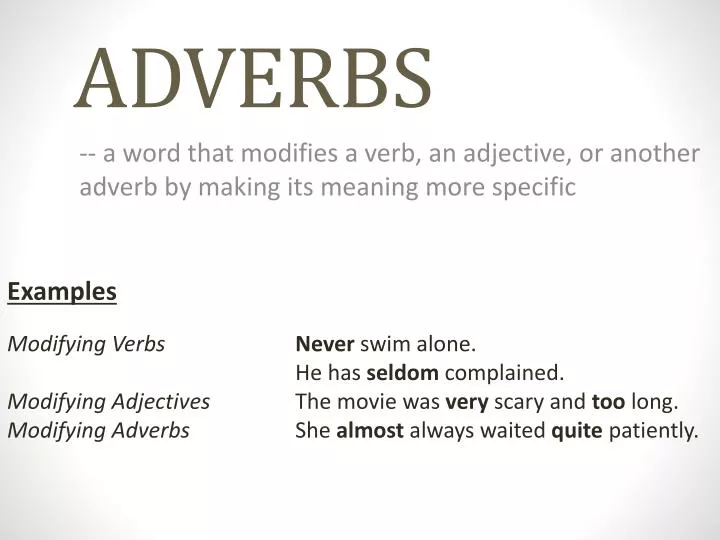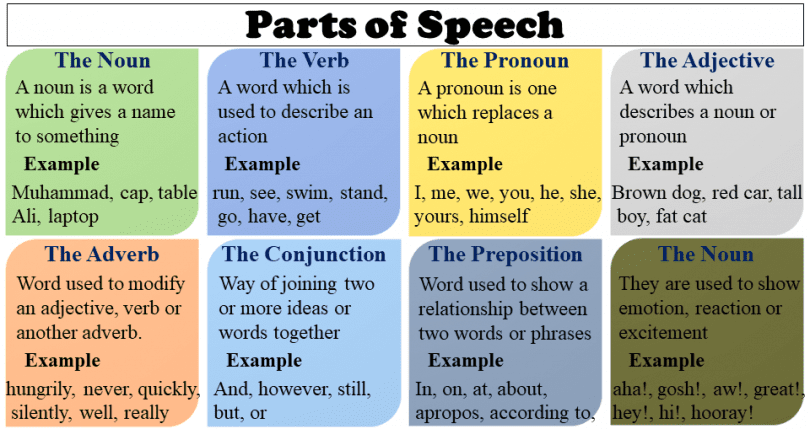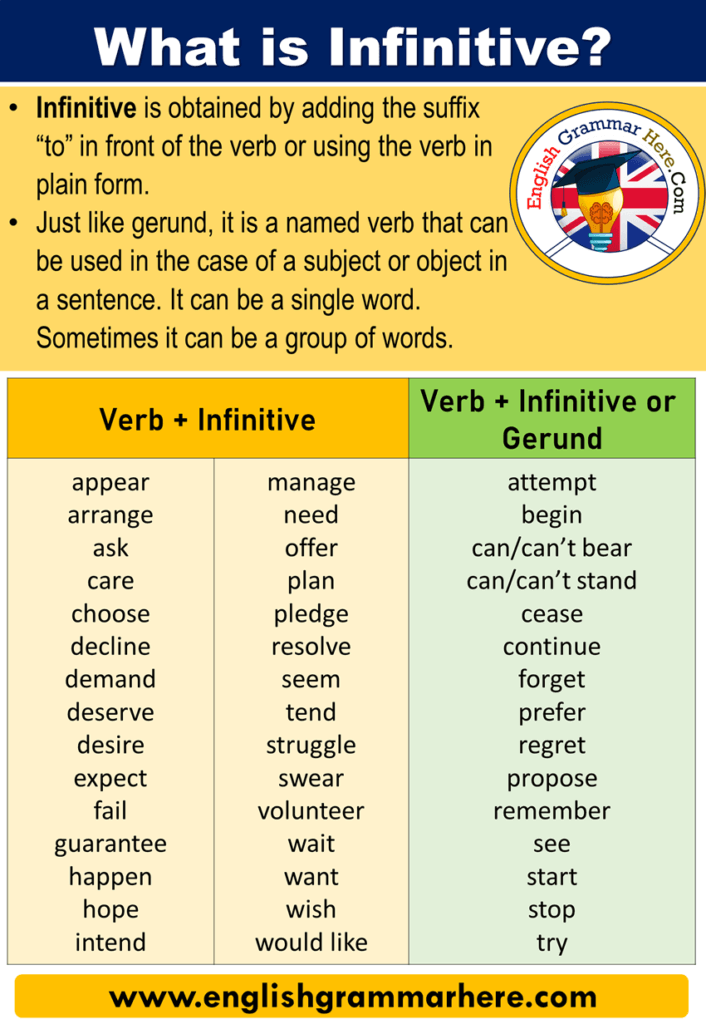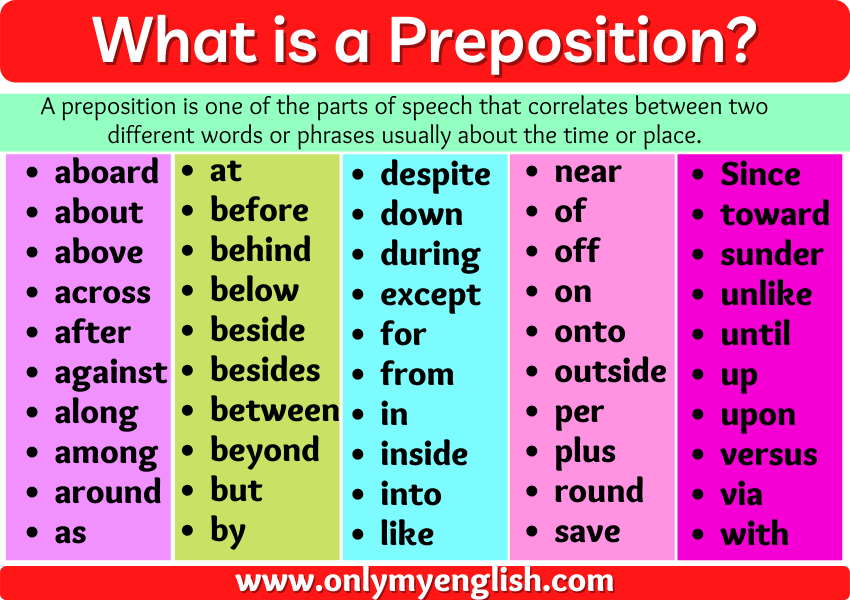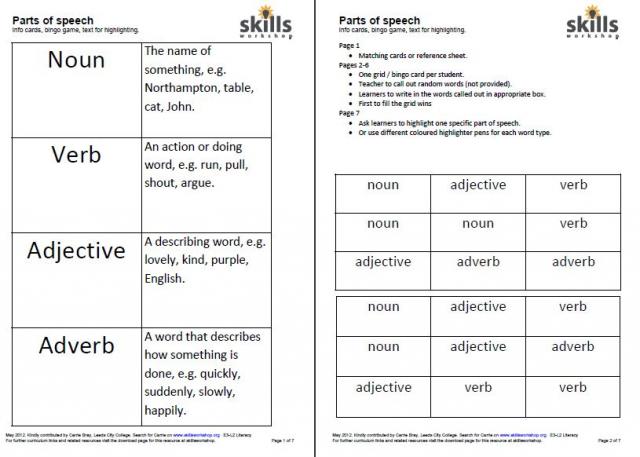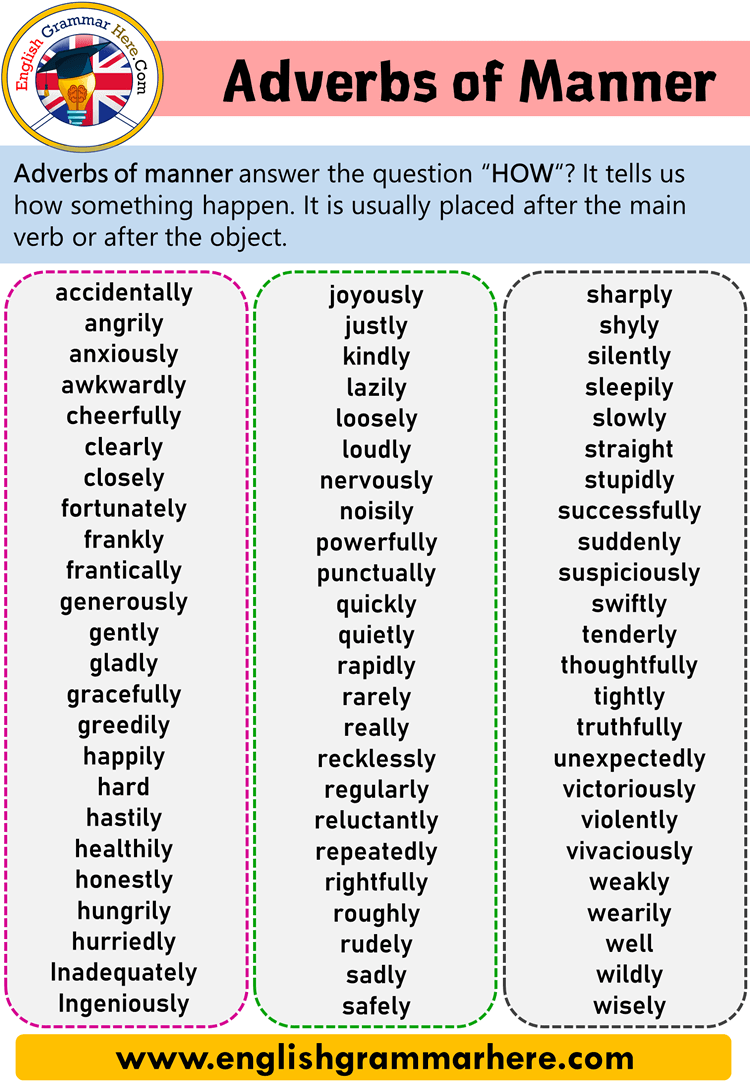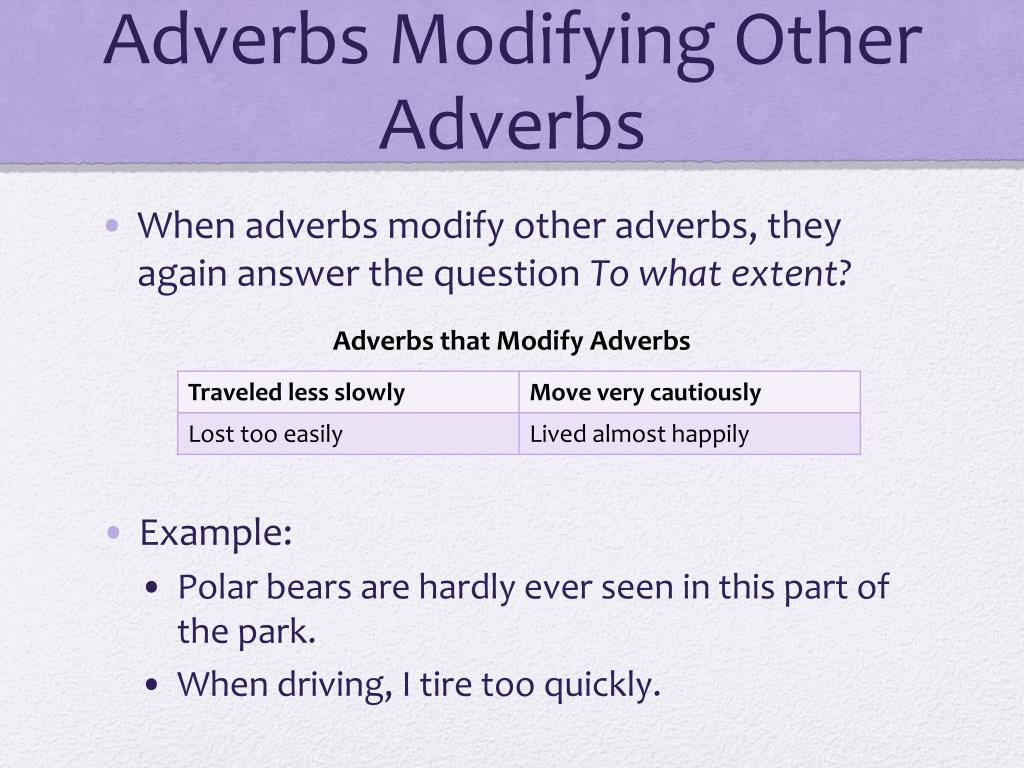The adverb definition is fairly straightforward in that it's a word that qualifies, limits, describes or modifies a verb, adjective or another adverb. However, it also has the power to modify apreposition, conjunction, clause or even an entire sentence. It also has the power to modify whole phrases and clauses—there's a lot to learn about. Just remember, the definition of an adjective is that it modifies anoun. While the definition of adverb is that is modifies pretty much every other key part of speech!
Continue reading this guide and it should become clearer. You can findmore info hereand there's also some furtherrecommended readingonline for those who need more clarification. An adverb is a word or an expression that modifies a verb, adjective, another adverb, determiner, clause, preposition, or sentence. Adverbs typically express manner, place, time, frequency, degree, level of certainty, etc., answering questions such as how? This is called the adverbial function, and may be performed by single words or by multi-word adverbial phrases and adverbial clauses.
The adverb can be a tricky element of the English language to get to grips with, not least because its definition has been somewhat blurred by modern linguists. You could alsosee thisonline grammar handbook, which looks at the different types of prepositional phrases. Another useful online grammar resource to help with writing your papers and essays is our EasyBib Plus grammar checker.
You can upload your work for free at EasyBib Plus for a quick and easy check. Many other adverbs, however, are not related to adjectives in this way; they may be derived from other words or phrases, or may be single morphemes. Examples of such adverbs in English include here, there, together, yesterday, aboard, very, almost, etc. However, modern grammarians recognize that words traditionally grouped together as adverbs serve a number of different functions. Some describe adverbs as a "catch-all" category that includes all words that do not belong to one of the other parts of speech.
An adverb is a word that modifies a sentence, verb, or adjective. An adverb can be a word or simply an expression that can even change prepositions, and clauses. An adverb usually ends only- but some are the same as their adjectives counterparts. Adverbs express the time, place, frequency, and level of certainty.
The functions of adverbs are performed by a single word known as an adverb or multi-words, called adverbial functions. Adverbs are a major part of speech that we use to modify verbs, adjectives, clauses, and even other adverbs. If you've studied grammar, you probably know that words like calmly, everywhere, and soon are examples of adverbs. But did you know that there are different types of adverbs? It's true, and we are going to learn how versatile adverbs can be by learning more about six common types of adverbs that we use all of the time.
In simple words, an adverb is a word that describes verbs. Adverbs are also used to add or modify the meaning of an adjective, a verb, a preposition, a sentence, a clause. We can add more information to the words, using different kinds of Adverbs. Hence, Adverbs are a part of speech and express the manner, time, place, frequency, degree, and much more about a verb. They also act as a verb phrase which includes a verb and its dependents. As such, relative adverbs are adverbs that introduce a relative clause.
Relative adverbs can introduce a group of words, such as an adjective clause, and they can be used in three different ways. Remember that the adverb meaning is to modify verbs and adjectives, as well as their own word type. Nouns are strictly off this grammar guest list, so don't confuse them with noun-modifying adjectives, which perform a similar function.
An adverb may be a single word, such as quickly, here or yesterday. However, adverbs can also be phrases, some made with prepositions, others made with infinitives. This page will explain the basic types of adverb phrases (sometimes called "adverbial phrases") and how to recognize them. Many of us know adverbs as words that modify verbs. They often end in 'ly' and answer questions as 'how', 'when', 'where', 'why', 'to what extent', 'how often'. Adverbs also modify adjectives (eg. a very cold day--how cold was it? very cold. The word 'very' modifies the adjective 'cold'. Adverbs also modify other adverbs.
When words such as "where," "when," "how," and "why" are placed at the very beginning of a question, they are called interrogative adverbs. The sentences are answered with either another sentence or a prepositional phrase. When an interrogative adverb is used in a question, you have to invert the subject and verb and place the verb first. Adverbs tell us things about actions that are performed.
For example, an adverb tells us when, where, how, in what manner, or to what extent an action is performed. They most commonly modify verbs, but they can also modify adjectives or other adverbs. Adverbs are words that give additional information about the verb, just like the adjective tells us more about the noun. It gives us information about when, where, how, by whom, to what extent and why the verb or action was performed.
What Are Verbs And Its Types Explain With Examples These questions are called an adverbial function. Adverbs are parts of speech with multiple functions. They're used to modify a verb, an adjective, another adverb, noun phrases, prepositional phrases, and whole clauses or sentences. Adverb plays a vital role in the modification of adjectives and verbs in the Grammar.
English being an Anglo-Saxon language, has diversity in it. Adverbs make this language easy by delivering a precise and concise point of view in a single word. A single adverb demonstrates the meaning of the whole sentence.
There are many types of adverbs that help with identification of place and time in sentences. In traditional English Grammar, adverbs are categorized as parts of speech. The adverbs of manners are formed by adding ly- to the adjectives. However, flat adverbs are formed as a result of corresponding adjectives.
Other languages also have a similar method to drive adverbs from the adjectives. For example, the French use the suffix-meant, Examples of adverbs in English include here, together, yesterday, and almost. Adverbs of purpose, sometimes called adverbs of reason, help to describe why something happened. They can come in the form of individual words – so, since, thus, because – but also clauses – so that, in order to. Notice in the examples that the adverbs of purpose are used to connect sentences that wouldn't make sense if they were formed alone.
A good way to understand adverbs is to think about them as the words that provide context. Specifically, adverbs provide a description of how, where, when, in what manner and to what extent something is done or happens. Normally, we can spot an adverb by the fact that it often ends in –ly, but there are lots of adverbs that don't end in this way.
Moreover, adverbs can be used in many combinations with each other. A conjunctive adverb describes the relationship between two main, or independent clauses. Also called a transitional conjunction or a cohesive conjunction, conjunctive adverbs are often found at the beginning of a main clause and followed by a comma.
Conjunctive adverbs can be placed anywhere in the clause and can be used as an interrupting phrase or word. Each of the five different types of adverbs helps the reader better understand what's happening in the sentence. Adverbs can modify verbs, adjectives, other adverbs, and whole sentences. Remember, adjectives are words that modify nouns and pronouns.
They help to describe or tell us more about those nouns and pronouns. Adverbs are words that modify verbs, adjectives, and other adverbs. Adverbs that express the manner/approach/process of the action in the sentence are called adverbs of manner.
They answer the question 'how is the action performed? Adverbs that express the importance/degree/level of the action in the sentence are called adverbs of degree. They answer the question 'how much is the action performed?
Conjunctive or linking adverbs link clauses or ideas and are used in both oral and written presentations. They are called this because in many instances, these adverbs serve the same function as conjunctions do. A partial list of conjunctive adverbs is below.
An adverb is a word used to define or modify the verb, adjective, or sentence. These adverbs convey the place, time, frequency, level of certainty, etc., or you can say that we use adverbs to answer questions like how? We may use single adverbs of more than one in a sentence to express the whole meaning. Adverbs of Degree tell us the degree or extent to which something happens. They answer the question "how much?" or "to what degree?". Adverbs of Degree can modify verbs, adjectives and other adverbs.
You have more than likely heard about the adverb, but what is its purpose within English grammar? In this article, we are going to find out exactly what an adverb is as well as how it can be used within a sentence. We are going to look at a variety of examples of adverbs being used as a way to further gain an understanding of their function. Learn adverb definition, different adverb types and useful grammar rules to use adverbs in sentences with ESL printable worksheets and example sentences. The adverbs in each of the sentences above answer the question in what manner? Adverbs can answer other types of questions about how an action was performed.
Conjunctive adverbs, depending on what they mean, can affect the clause it is a part of, and they sometimes follow a semicolon. In other words, conjunctive adverbs have more than one use, but the important thing to remember is that they always connect two sentences or clauses. Adverbs of degree are words that answer the questions "how much" or "to what extent." Adverbs of degree usually modify other verbs, adjectives, or adverbs. An adverb is a word that modifies other words in the sentence. Adverbs can modify verbs, other adverbs, adjectives, or complete sentences. Several of the words on the compounds list also fall into the conjunctive adverbs category.
Conjunctives can be used to join two clauses together in one sentence. However, conjunctives can also be used to join two sentences. (See what we did there?) They can be used to show a relationship between two clauses, and can make your writing flow better or seem more conversational. An adverb is a word, or phrase, which modifies verbs, adjectives or other adverbs to describe how, where or when an action took place.
Here we'll look at adverb definition and types, with examples. Also, an adverb can be used as a conjunction when connecting ideas. These are called conjunctive adverbs, and will be discussed after reviewing the five main types of adverbs.
Adverbs are often formed by adding the letters "-ly" to adjectives. This makes it very easy to identify adverbs in sentences. There are many exceptions to this rule; everywhere, nowhere, and upstairs are a few examples.
An adverb is a word/a set of words that modifies verbs, adjectives, and other adverbs. It tells when, where, and how an action is performed or indicates the quality or degree of the action. Adverbs of place tell us more about where the verb took place.
Many writers confuse them with prepositions, which describe the location of nouns. While some of these words can function as prepositions, they are considered adverbs when they modify verbs. Also, prepositions are followed by objects, while adverbs of place are not.
Like adjectives, adverbs can show degrees of comparison, although it's slightly less common to use them this way. With certain "flat adverbs" , the comparative and superlative forms look the same as the adjective comparative and superlative forms. It's usually better to use stronger adverbs rather than relying on comparative and superlative adverbs. The use of adverbs can modify any other part of the sentence including verbs, adjectives, clauses, sentences, and other adverbs. A modifier of words that include other adverbs, adjectives, clauses, phrases, sentences, and verbs.
